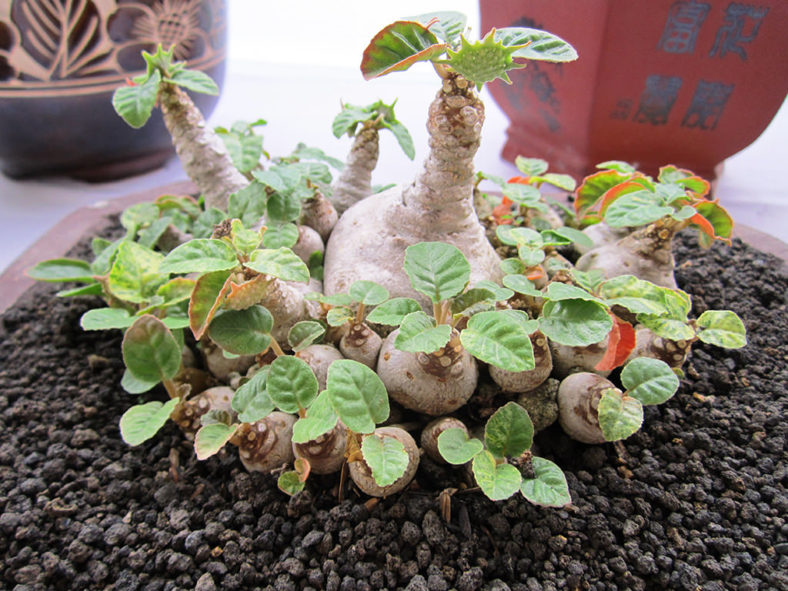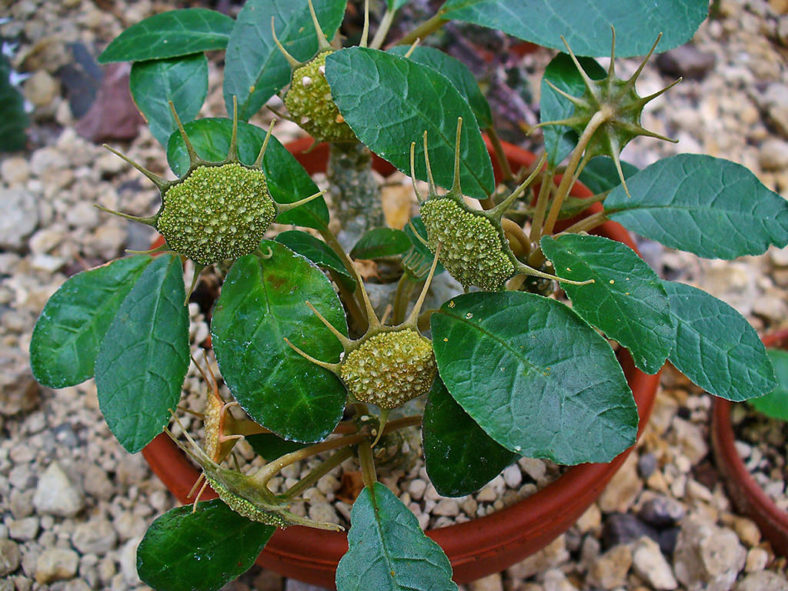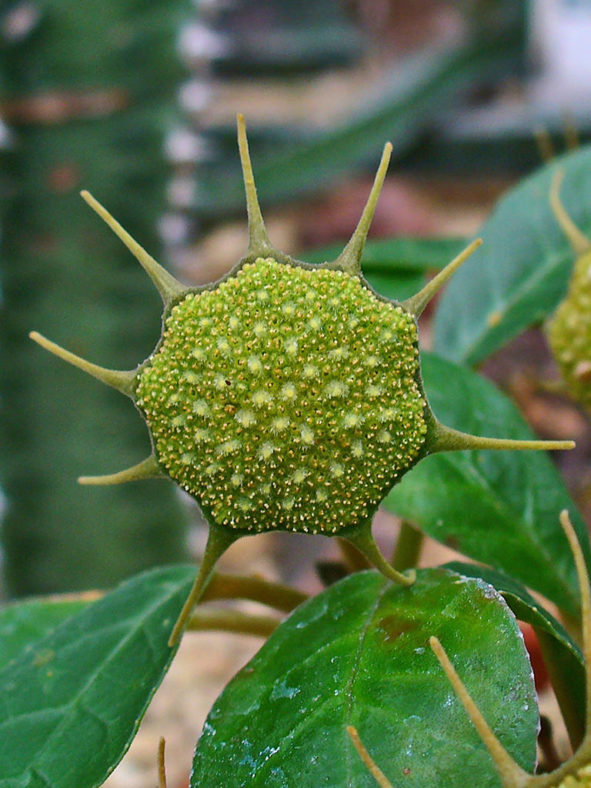Scientific Name
Dorstenia foetida Schweinf.
Common Name(s)
Foetid Dorstenia, Grendelion, Shield Flower
Synonym(s)
Dorstenia foetida subsp. foetida
Scientific Classification
Family: Moraceae
Tribe: Dorstenieae
Genus: Dorstenia
Origin
The native range of Dorstenia foetida is from Eastern Africa (Tanzania, Kenya, Somalia, and Ethiopia) to Arabia (Yemen, Oman, and Saudi Arabia). It occurs in deciduous and succulent bushland, open places, and rock outcrops.
Description
Dorstenia foetida is a small succulent with a thick erect stem, unbranched or with several branches with pronounced scars of leaves, stipules, and inflorescences. It is a very variable species, especially in the shape and size of the leaves, length of petioles, and stipules. The stem is dark green to mahogany-colored with peeling bark in older plants and can grow up to 16 inches (40 cm) tall and 6 inches (15 cm) in diameter. The leaves are light green to grayish-green and crowded at the top of stems and branches. They are oblong to narrowly lanceolate or elliptic, measuring up to 5.6 inches (14 cm) long and 0.8 inches (2 cm) wide.
The flowers are small, grayish or green, reaching up to 0.8 inches (2 cm) across. The solitary disc-shaped flower-like structures are actually fruiting bodies called hypanthodiums, consisting of many minuscule flowers. They are usually grayish or green or sometimes orange or pinkish and measure up to 0.6 inches (1.5 cm) in diameter, excluding appendages.

Hardiness
USDA hardiness zones 10b to 11b: from 35 °F (+1.7 °C) to 50 °F (+10 °C).
How to Grow and Care
Dorstenias are warm-loving plants that need a bit more water than regular succulents. They need a well-drained potting mix, and their water needs vary depending on the season of the year. Water your Dorstenias regularly to abundant from spring to fall. Allow the soil to dry slightly between watering, but ensure they never dry out completely. These plants tend to go at least partially dormant during the winter months. During this period, water them very little. Giving plants a warm, sunny position can result in beautiful, compact growing plants. It is recommended to fertilize plants occasionally during their growing period with a high potash and phosphorus fertilizer.
The spring weather, with a high-temperature swing between the day and night hours and pretty frequent rains, can favor the development of fungus diseases, which should be treated preemptively with a systemic fungicide.
Dorstenias are generally propagated by seed. Many species are self-fertile. Their seeds are expelled explosively from the mature seed heads and are liable to populate pots several feet away. They can also be propagated by cuttings.
Learn more at How to Grow and Care for Dorstenia.
Links
- Back to genus Dorstenia
- Succupedia: Browse succulents by Scientific Name, Common Name, Genus, Family, USDA Hardiness Zone, Origin, or cacti by Genus
Photo Gallery
Click on a photo to see a larger version.


